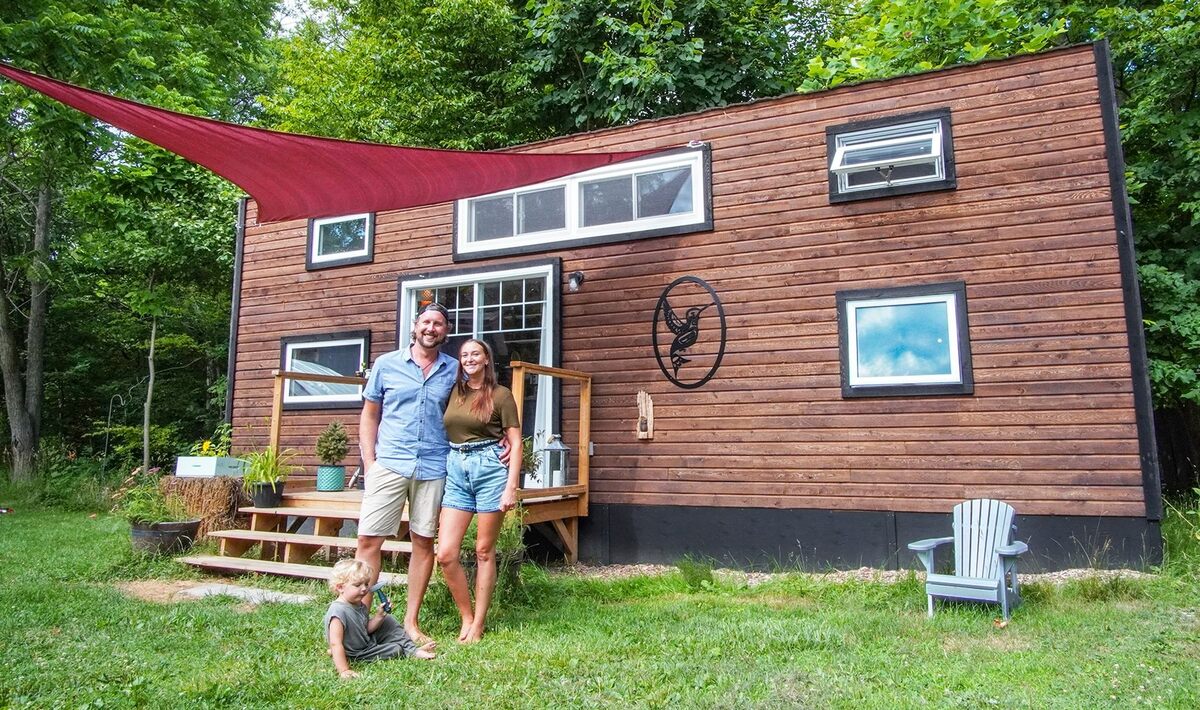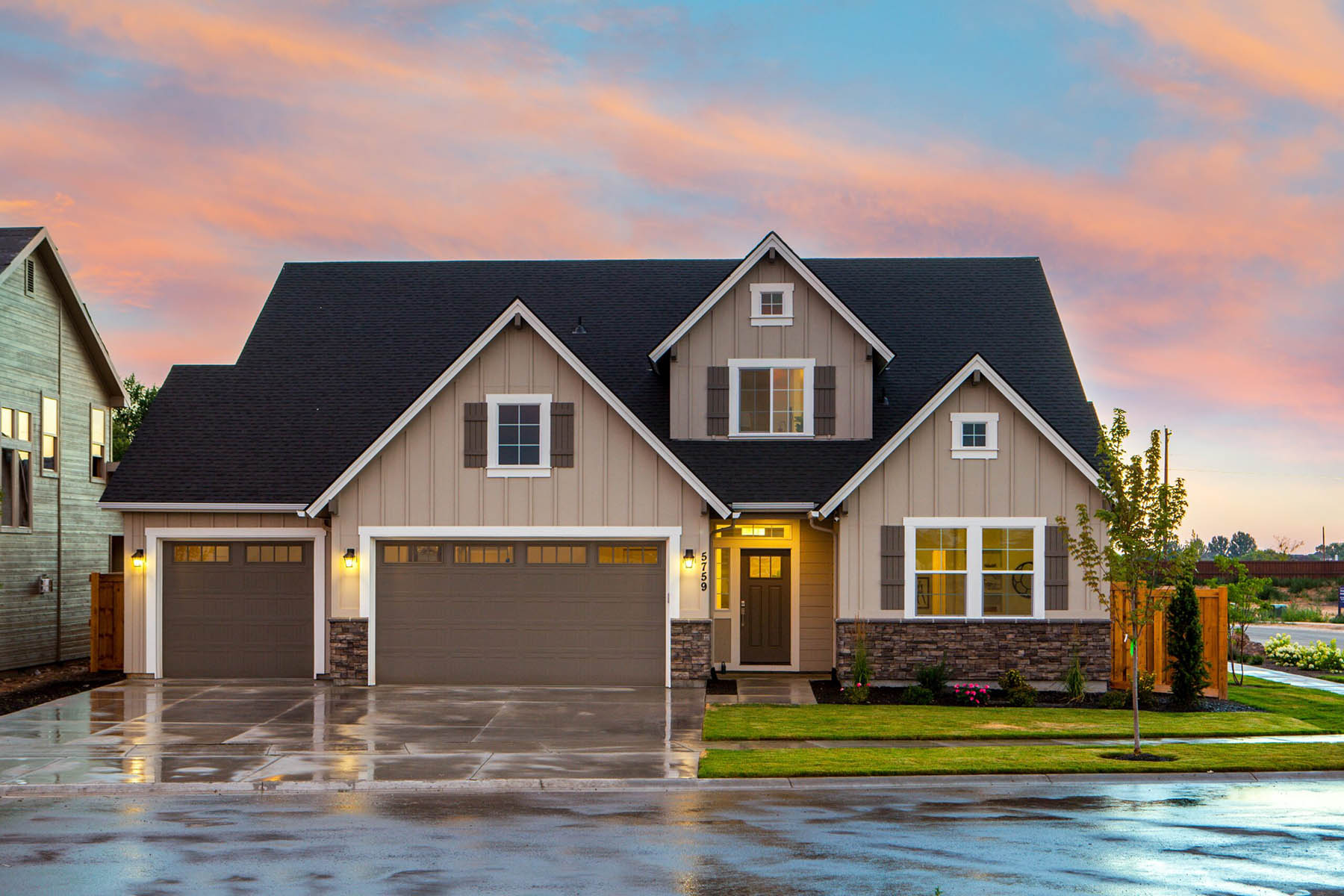Home>Health & Lifestyle>Family & Pet-Friendly Home Design>How Many People Live The Tiny Home Life


Family & Pet-Friendly Home Design
How Many People Live The Tiny Home Life
Modified: January 6, 2024
Discover family and pet-friendly home design ideas for living the tiny home life. Explore innovative solutions for comfortable and sustainable living.
(Many of the links in this article redirect to a specific reviewed product. Your purchase of these products through affiliate links helps to generate commission for Storables.com, at no extra cost. Learn more)
**
The Appeal of Tiny Homes
**
Living in a tiny home has become a popular lifestyle choice for many individuals and families seeking a simpler, more sustainable way of living. The appeal of tiny homes lies in their efficient use of space, minimalistic design, and reduced environmental impact. These compact dwellings offer a sense of freedom, affordability, and a closer connection to nature, making them an attractive option for those looking to downsize and embrace a more intentional way of life.
The Appeal of Tiny Homes
There is a certain allure to the idea of living in a tiny home that has captured the imagination of people around the world. The appeal of tiny homes can be attributed to several key factors:
- Simplicity and Minimalism: Tiny homes embody the essence of minimalistic living, allowing individuals to declutter their lives and focus on what truly matters. With limited space, there is a natural inclination to prioritize essentials and eliminate unnecessary possessions. This minimalist approach can lead to a more intentional and fulfilling lifestyle.
- Affordability: The cost of owning and maintaining a traditional home can be prohibitive for many individuals and families. Tiny homes offer a more affordable alternative, allowing people to achieve homeownership without shouldering a substantial financial burden. Additionally, lower utility costs and reduced maintenance expenses contribute to the overall affordability of tiny home living.
- Environmental Sustainability: In an era marked by environmental consciousness, tiny homes have emerged as a sustainable housing option. These compact dwellings consume fewer resources, require less energy to heat and cool, and often incorporate eco-friendly materials and technologies. By minimizing their ecological footprint, tiny home dwellers actively contribute to environmental preservation.
- Freedom and Mobility: The compact size of tiny homes provides a sense of freedom and mobility that is unparalleled in traditional homeownership. Many tiny home enthusiasts appreciate the ability to relocate their homes with relative ease, whether for a change of scenery, job opportunities, or travel. This mobility aligns with a desire for flexibility and exploration, allowing individuals to embrace new experiences without being tied down by a permanent residence.
- Closer Connection to Nature: Tiny homes are frequently situated in natural settings, fostering a closer connection to the outdoors. Whether nestled in a forest, perched by a serene lake, or overlooking a picturesque mountain range, these homes offer residents the opportunity to immerse themselves in nature’s beauty. The tranquility and serenity of such locations contribute to a more peaceful and harmonious way of life.
Collectively, these factors contribute to the undeniable appeal of tiny homes, attracting individuals and families who seek a more deliberate, sustainable, and fulfilling lifestyle.
The Challenges of Living in a Tiny Home
While the allure of tiny homes is undeniable, it is essential to acknowledge the challenges associated with this unique lifestyle. Living in a compact space presents a set of considerations and adjustments that individuals must navigate:
- Limited Living Space: The most apparent challenge of tiny home living is the constraint of space. Adapting to a significantly smaller living area requires individuals to carefully curate their belongings and embrace a more minimalist lifestyle. Clutter management and creative storage solutions are essential to make the most of the available space.
- Multi-Functional Design: In a tiny home, every square inch must serve a purpose. Furniture and fixtures often serve multiple functions to maximize utility and efficiency. While this approach promotes resourcefulness, it also demands thoughtful planning and adaptability in daily routines.
- Personal Privacy: Privacy can be compromised in a tiny home, especially when shared with family members or roommates. Finding moments of solitude and personal space within the confined quarters can be challenging and requires open communication and mutual respect among residents.
- Zoning and Legal Restrictions: Navigating zoning regulations and legal restrictions related to tiny homes can pose a significant challenge. Many municipalities have specific ordinances governing the construction and placement of tiny homes, necessitating thorough research and compliance to avoid potential legal issues.
- Weather Considerations: The compact nature of tiny homes means that they may be more susceptible to temperature fluctuations and weather conditions. Proper insulation, ventilation, and climate control measures are crucial to ensure comfort and safety throughout the year.
- Social Stigma: Despite the growing acceptance of tiny homes, some individuals may encounter social stigma or skepticism regarding this non-traditional housing choice. Addressing misconceptions and advocating for the benefits of tiny home living may be necessary to foster broader understanding and acceptance.
By acknowledging and addressing these challenges, individuals can make informed decisions about embracing the tiny home lifestyle and proactively navigate the unique considerations it entails.
Tip: As of 2018, it’s estimated that around 10,000 people in the US live in tiny homes. This number is growing as more people seek affordable and sustainable housing options.
The Tiny Home Community
Within the realm of tiny home living, a vibrant and supportive community has flourished, bringing together individuals who share a passion for minimalistic, sustainable, and intentional living. The tiny home community encompasses a diverse array of enthusiasts, builders, designers, and advocates, fostering a culture of collaboration, creativity, and shared experiences.
One of the defining features of the tiny home community is its emphasis on knowledge sharing and mutual support. Through online forums, social media groups, and in-person gatherings, tiny home enthusiasts exchange valuable insights, practical tips, and innovative design ideas. This collaborative spirit extends to the realm of DIY construction and renovation, where individuals often contribute their expertise to assist others in realizing their tiny home dreams.
Furthermore, the tiny home community serves as a platform for advocacy and awareness regarding alternative housing options. Advocates and activists within this community strive to promote legislative changes, challenge zoning restrictions, and elevate the visibility of tiny homes as a viable solution to housing challenges. By amplifying the voices of those passionate about tiny home living, the community seeks to effect positive change and expand housing options for individuals and families.
As a testament to the growing influence of the tiny home movement, dedicated tiny home festivals, workshops, and expos have emerged, providing opportunities for enthusiasts to connect, learn, and celebrate their shared passion. These events showcase a diverse range of tiny home designs, innovative space-saving solutions, and sustainable technologies, inspiring attendees to explore the possibilities of small-scale living.
Moreover, the tiny home community extends its support to those considering or transitioning to tiny home living. Through mentorship programs, online resources, and real-life gatherings, individuals can seek guidance, gain insights into the practical aspects of tiny home living, and form meaningful connections with like-minded individuals.
Ultimately, the tiny home community serves as a dynamic and inclusive space where individuals can find inspiration, guidance, and a sense of belonging as they embrace a lifestyle centered on simplicity, sustainability, and community.
The Environmental Impact of Tiny Homes
Embracing a tiny home lifestyle goes beyond the personal benefits of minimalistic living; it also has a profound positive impact on the environment. The environmental advantages of tiny homes are multifaceted and contribute to a more sustainable and ecologically conscious way of life.
One of the most notable environmental benefits of tiny homes is their reduced carbon footprint. These compact dwellings require significantly fewer resources to construct and maintain, resulting in lower energy consumption and decreased greenhouse gas emissions. Additionally, many tiny homes are designed to incorporate energy-efficient features such as solar panels, composting toilets, and rainwater harvesting systems, further minimizing their environmental impact.
Furthermore, the small size of tiny homes often necessitates thoughtful and efficient use of materials, encouraging sustainable building practices and minimizing waste. Many tiny home builders prioritize eco-friendly construction materials and techniques, thereby reducing the demand for resource-intensive building materials and mitigating construction-related environmental harm.
Another significant environmental consideration is the land conservation aspect of tiny homes. By occupying a smaller physical footprint, tiny homes contribute to the preservation of open spaces and natural habitats. This approach stands in stark contrast to traditional suburban sprawl, where expansive developments encroach upon undeveloped land, leading to habitat destruction and biodiversity loss.
Additionally, the emphasis on self-sufficiency and sustainability within the tiny home community often extends to practices such as organic gardening, permaculture, and off-grid living. Many tiny home dwellers cultivate their food, utilize renewable energy sources, and adopt eco-conscious lifestyle choices, further reducing their environmental impact and promoting a harmonious relationship with the natural world.
Moreover, the advocacy and awareness efforts within the tiny home community contribute to broader conversations about sustainable living and housing affordability. By championing the principles of minimalism, resource conservation, and environmental stewardship, tiny home enthusiasts actively contribute to a more conscientious and environmentally responsible society.
In essence, the environmental impact of tiny homes transcends individual dwellings, embodying a collective commitment to sustainable living practices, conservation, and a harmonious coexistence with the planet.
Conclusion
The phenomenon of tiny home living represents a profound shift in the way individuals perceive and experience the concept of home. Beyond its modest physical dimensions, the allure of tiny homes lies in the profound impact they have on people’s lives, communities, and the environment.
By embracing the minimalist ethos of tiny homes, individuals and families are afforded the opportunity to prioritize experiences over possessions, foster deeper connections with nature, and cultivate a sense of freedom and mobility. The appeal of tiny homes extends beyond affordability and sustainability; it embodies a philosophy of intentional living, where every aspect of daily life is thoughtfully considered and purposefully curated.
However, the decision to embrace tiny home living is not without its challenges. From adapting to limited living space to navigating zoning regulations and social perceptions, individuals embarking on this lifestyle must approach it with thoughtful consideration and a willingness to address the unique considerations it entails.
Central to the tiny home movement is the vibrant and supportive community that has emerged, uniting individuals with a shared passion for sustainable, intentional living. This community serves as a wellspring of knowledge, advocacy, and camaraderie, empowering individuals to navigate the practical and societal aspects of tiny home living while fostering a sense of belonging and shared purpose.
Moreover, the environmental impact of tiny homes cannot be overstated. These compact dwellings embody a commitment to resource conservation, sustainable building practices, and a harmonious coexistence with the natural world. By championing environmental stewardship and land conservation, tiny home enthusiasts actively contribute to a more conscientious and ecologically responsible society.
In essence, the appeal of tiny homes transcends their physical dimensions; it represents a profound shift towards a more deliberate, sustainable, and community-oriented way of life. As the tiny home movement continues to gain momentum, it serves as a testament to the enduring human desire for simplicity, connection, and a meaningful relationship with the world around us.
Whether as a personal dwelling, a community endeavor, or an environmental statement, tiny homes encapsulate the profound notion that true richness lies not in material possessions, but in the depth of our experiences, relationships, and the legacy we leave for future generations.
Frequently Asked Questions about How Many People Live The Tiny Home Life
Was this page helpful?
At Storables.com, we guarantee accurate and reliable information. Our content, validated by Expert Board Contributors, is crafted following stringent Editorial Policies. We're committed to providing you with well-researched, expert-backed insights for all your informational needs.















0 thoughts on “How Many People Live The Tiny Home Life”